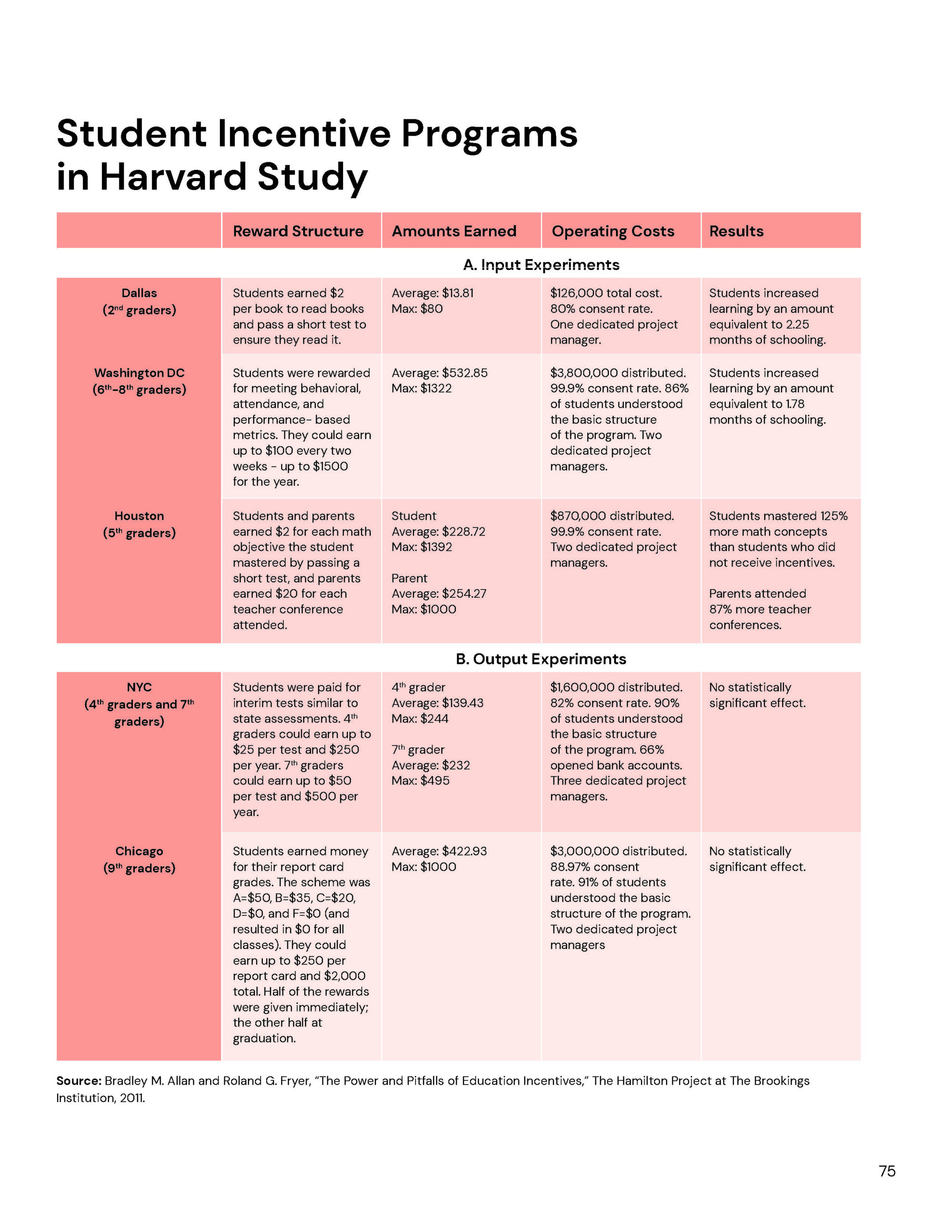Student Incentives
Providing modest financial incentives to students for the mastery of academic concepts is at the forefront of new techniques for boosting student achievement.
Researchers from Harvard University experimented with various types of student incentives in 250 low-performing, urban schools across the nation between the 2007-2008 and 2010-2011 school years. They offered modest financial rewards to students who completed tasks such as reading books, mastering mathematical concepts, or achieving high test scores or report card grades.1
The overwhelming success of the Harvard experiment should attract the attention of policymakers everywhere. It shows that K-12 students, like all individuals, respond to incentives. Especially for students who suffer from disadvantages such as parental disengagement, incentives can be very effective at teaching children to value educational attainment.
Key Points
Incentives are a highly cost-effective means of promoting student achievement. Harvard researchers offered second-graders $2 for every book they read, up to a maximum of 20 books per school year. On average, students were paid $13.81 per year. This relatively small cost was associated with more than two months’ worth of additional learning per school year. When fifth-graders were offered $2 for each math concept they mastered, they mastered 125% more math concepts than students who were not offered incentives.2
Comparatively speaking, this success rate indicates that student incentives are far more cost-effective at boosting student achievement among disadvantaged students than virtually all other forms of school spending.
Incentives are most effective when attached to completion of short-term goals. The Harvard project showed that student progress increased most quickly when incentives were provided for reading books or mastering mathematical concepts, while incentives for higher scores on standardized tests or report card grades had little effect. Students appear to respond best to incentives with more immediate time horizons.
As the Harvard team suggests, students at the low-performing, urban schools they examined are less likely to understand the value of educational attainment or the habits that lead to higher attainment. They believe this is why it was more effective to provide incentives for “inputs” rather than “outputs,” such as test scores.3
Student incentives do not destroy the intrinsic value of learning. The Harvard research shows that the behaviors students adopted in pursuit of incentives tend to persist long after the incentives are removed. Surveys conducted of the participating students also indicated that students’ intrinsic motivation for learning may have actually improved after participating in an incentive program.
Recommendations
Create an incentive program to reward students for productive behaviors in education. The Harvard team recommends that policymakers could realize highly cost-effective gains in student achievement by providing modest financial incentives for the completion of short-term objectives, while allowing students to earn up to a pre-determined maximum each year.4
Incentive programs are likely most effective when offered at an early age in order to teach students productive habits. This lesson is particularly relevant for students who suffer from parental disengagement or other disadvantage.

1 Roland G. Fryer, “Financial Incentives and Student Achievement: Evidence from Randomized Trials,” Quarterly Journal of Economics, 2011.
2 Ibid.
3 Ibid.
4 Bradley M. Allan and Roland G. Fryer, “The Power and Pitfalls o Education Incentives,” The Hamilton Project at The Brookings Institution, Discussion Paper 2011-07.75
